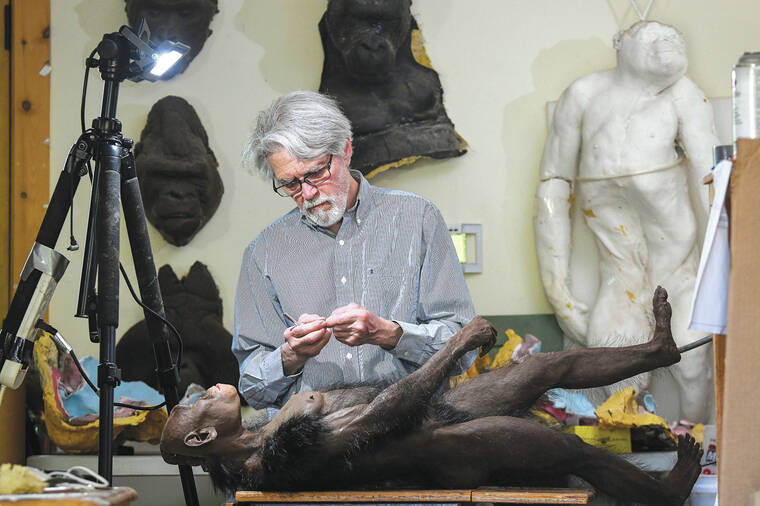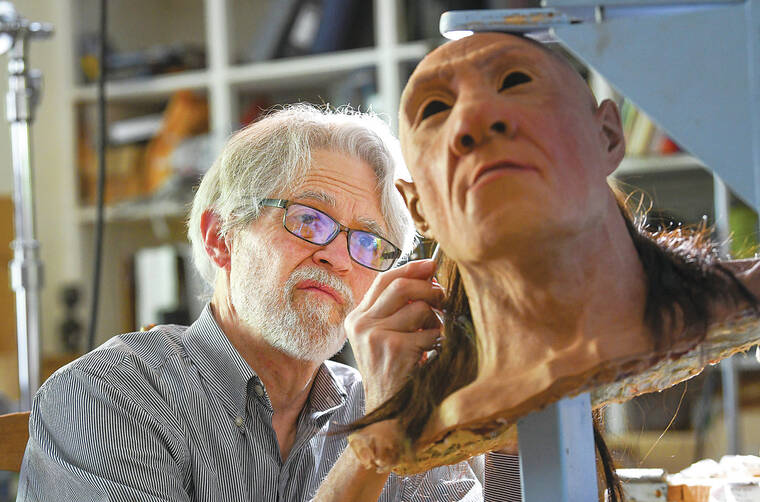Science paints a new picture of the ancient past, when we mixed and mated with other kinds of humans
What does it mean to be human?
For a long time, the answer seemed clear. Our species, Homo sapiens — with our complex thoughts and deep emotions — were the only true humans to ever walk the Earth. Earlier forms, like the Neanderthals, were thought to be just steps along the path of evolution, who died out because we were better versions.
That picture is now changing.
In recent years, researchers have gained the power to pull DNA from ancient hominins, including our early ancestors and other relatives who walked on two legs. Ancient DNA technology has revolutionized the way we study human history and has quickly taken off, with a constant stream of studies exploring the genes of long-ago people.
Along with more fossils and artifacts, the DNA findings are pointing us to a challenging idea: We’re not so special. For most of human history we shared the planet with other kinds of early humans, and those now-extinct groups were a lot like us.
“We can see them as being fully human. But, interestingly, a different kind of human,” said Chris Stringer, a human evolution expert at London’s Natural History Museum. “A different way to be human.”
What’s more, humans had close — even intimate — interactions with some of these other groups, including Neanderthals, Denisovans and “ghost populations” we only know from DNA.
“It’s a unique time in human history when there are only one of us,” Stringer said.
A world with many hominins
Scientists now know that after H. sapiens first showed up in Africa around 300,000 years ago, they overlapped with a whole cast of other hominins, explained Rick Potts, director of the Smithsonian’s Human Origins Program.
Neanderthals were hanging out in Europe. Homo heidelbergensis and Homo naledi were living in Africa. The short-statured Homo floresiensis, sometimes known as the “Hobbit,” was living in Indonesia, while the long-legged Homo erectus was loping around Asia.
Scientists started to realize all these hominins weren’t our direct ancestors. Instead, they were more like our cousins: lineages that split off from a common source and headed in different directions.
Archaeological finds have shown some of them had complex behaviors. Neanderthals painted cave walls, Homo heidelbergensis hunted large animals like rhinos and hippos, and some scientists think even the small-brained Homo naledi was burying its dead in South African cave systems. A study last week found early humans were building structures with wood before H. sapiens evolved.
Researcher also wondered: If these other kinds of humans were not so different, did our ancestors have sex with them?
For some, the mixing was hard to imagine. Many argued that as H. sapiens ventured out of Africa, they replaced other groups without mating. Archaeologist John Shea of New York’s Stony Brook University said he used to think of Neanderthals and H. sapiens as rivals, believing “if they bumped into each other, they’d probably kill each other.”
DNA reveals ancient secrets
But DNA has revealed there were other interactions, ones that changed who we are today.
In 2010, the Swedish geneticist Svante Paabo and his team pieced a tricky puzzle together. They were able to assemble fragments of ancient DNA into a full Neanderthal genome, a feat that was long thought to be impossible and won Paabo a Nobel Prize last year.
This ability to read ancient DNA revolutionized the field, and it is constantly improving.
For example, when scientists applied these techniques to a pinky bone and some huge molars found in a Siberian cave, they found genes that didn’t match anything seen before, said Bence Viola, an anthropologist at the University of Toronto who was part of the research team that made the discovery. It was a new species of hominin, now known as Denisovans, who were the first human cousins identified only by their DNA.
Armed with these Neanderthal and Denisovan genomes, scientists could compare them to people today and look for chunks of DNA that match. When they did, they found clear signs of crossover.



